Atlas Bridal might be nearing its 90th birthday, but the old shop in Toledo, Ohio, isn’t afraid to take new gambles.
Led by its prom-peddling sister store, Blue, Atlas Bridal stepped into the mobile app world at the end of 2014, a space few independent bridal stores have ventured.
A move to build upon Blue’s existing texting club and consumers’ ever-increasing reliance on mobile devices, Atlas invested in a mobile app to leverage the flexibility and more dynamic features a mobile app could provide.
“Our texting club [for prom customers] was nice, but there were things like character count and the ability to show images that really limited its potential,” Atlas operations supervisor Tiffany Strock says. “The mobile app really opened up the possibilities for us.”
In quick time, Atlas began sharing photos of new dresses, broadcasting store information, offering turn-by-turn navigation to its front door and touting its rewards program. And last prom season, Atlas’ first with the app, sales climbed.
“While it’s always hard to pinpoint exactly why the numbers went up, I think we can attribute at least some of the increase to the app,” Strock says. “Our prom customers joined our loyalty program, used coupons and loved viewing the photos of new dresses on the app.”
In 2016, Strock is taking the mobile app from Blue’s prom customers to Atlas’ bridal clients with a revised app spotlighting Atlas’ bridal inventory, sharing bridal-specific news, and looking to extend the shop’s success in the prom category to bridal.
“I’m excited for the bridal aspect and think it will work for us since we’ll be able to stay connected with brides in a modern, tech-savvy way,” Strock says. “It’s the next evolution for us here and we only see the ability to build this further.”
Mobile Apps and Bridal Retail
Though Google Play hosts an estimated 1.6 million apps for Android devices and more than 1.5 million apps are available on Apple’s App Store, U.S. bridal shops are noticeably absent from mobile screens with only a few scattered exceptions.
Mega-chain David’s Bridal launched its mobile app in late 2014. The app allows brides to search inventory and find potentially appealing dresses; create lists of favorite products; schedule appointments with a David’s Bridal stylist; and find nearby David’s Bridal locations.
Bridals by Lori, the Atlanta-based shop best known for its spot on TLC’s “Say Yes to the Dress: Atlanta,” also boasts a mobile app, complete with an event countdown timer, shopping tips and online payment options.
While a mobile app for a bridal store isn’t quite the no-brainer that it would be for a restaurant chain that lives and dies with repeat customers, the technology continues to gain attention among bridal retailers given society’s mounting reliance on mobile devices and the fact that bridal shops generally deal with a younger, more tech-savvy demographic.
“People are not willing to live without their phones these days, so having an app gives your store a continuous presence with customers,” says Brian Pautsch, head of 3 Step Solutions, a Chicago firm that provides small business software solutions that integrate web, mobile, e-commerce and social media. “Any opportunity to have people see your brand and product over and over again is valuable.”
Yet, exactly how a mobile app might be deployed in the bridal retail space – its potential features, corralling staff and customer buy-in and the prospective ROI – remains a relative mystery given how few bridal shops have tried it. That reality leaves many bridal retailers on the mobile app sidelines, curious, if not altogether dismissive of the digital marketing vehicle’s place in an already crowded lot that primarily centers around social media, websites and e-mail.
Giving It A Shot
In 2014, Mike Daniel, owner of Ella Park Bridal in Newburg, Ind., hired a third-party firm to create a mobile app for his 10-year-old shop.
“I thought an app was relevant and modern, and wanted to give it a shot,” says Daniel, who went ahead with the app despite the objections of his daughter, Jackie, who handles Ella Park’s marketing. “She just didn’t see as much value in it and kept telling me, ‘We’re a one-and-done business. Brides get their dress and they’re gone.’”
Despite his daughter’s objections, Daniel forged ahead, particularly intrigued by the idea of creating a referral system with rewards and the ability to send push notifications to customers’ smartphones.
“The old days of putting an ad in the newspaper are gone. . . and because we were one of the first [with a mobile app], it gave us an opportunity to look different than everyone else,” Daniel says.
Sam Wereb of ENMBL, the mobile marketing firm that developed Atlas’ app, contends the dearth of bridal retail apps is one powerful reason bridal retailers might themselves investigate the investment.
“When you have an app and the nearest five competitors don’t, that’s an advantage,” Wereb says. “In marketing, you don’t need to be perfect; you just need to find your advantage. An app is an invitation to customers to keep your store with them all the time.”
Wereb, in fact, calls apps a sticky marketing tool that allows bridal retailers to reach their most targeted customers.
“You’re getting people – brides getting married and girls going to prom – interested in what you’re selling, which can really make the door swing,” he says.
Indeed, rather than relying on luck to reach customers, as is the case with radio or, increasingly, some social-media posts, apps are an immediate consumer opt-in. A customer’s decision to download the app signals her desire to learn about your store and what’s happening under your roof. There’s no filter, particularly so when the customer enables push notifications, which allow a store to send information – deals, rewards or announcements – directly to prospective customers’ phone without stringent character counts or image restrictions.
And unlike a mobile website, the customer does not have to open her browser and search for your store. An app offers a rich and much more optimized digital tool for the mobile experience. Users can do things without a mobile connection and enjoy interactive elements.
“It’s all about reaching people when and where they want to be reached,” Wereb says.
While Atlas’ experience with its mobile app thus far has largely been limited to its prom business, Strock is looking forward to entering the bridal side with a determined focus, pushing out information on events or touting a flash sale.
“This is a way for us to better keep in touch with brides and to do so in a very immediate way,” Strock says.
Before even heading down the app-development path, however, it’s critical bridal shops understand their short-term and long-term objectives, their audience and if the shop can indeed handle the initial and ongoing needs an app demands.
“It’s questionable to spend thousands on an app just to have one,” Pautsch acknowledges, “and this is not something you want to rush into. It’s a lot of work to get an app started and there is maintenance involved.”
Going Live
Getting an app published to Apple’s App Store or Google Play, the two outlets that represent the overwhelming number of mobile devices, is no easy feat.
First, you need to build the app, which can prove costly and confusing.
When mobile apps first hit the mainstream, Pautsch says small businesses desiring an app needed to hire an agency or developer to build the app from the ground up, a service that would cost, at minimum, $10,000.
As mobile apps have become more commonplace, however, self-directed online platforms such as ShoutEm, Como and BuildFire have blossomed allowing small businesses to build apps in a more user-friendly, affordable way. Staff can go to a website and start designing their app with drag-and-drop features, later uploading logos and photos. Many such services offer free app construction, but then charge a monthly service fee ranging from $15-150 once the app goes live.
Many businesses, however, continue to hire agencies or software companies for custom-built apps containing special features, understanding that a basic app offers information but little engagement whereas a custom-built app can generate more energy and ROI.
“And, for those, you’re still looking at $10,000 or more,” Pautsch says.
Then, there’s a hybrid model. Wereb’s ENMBL, which builds customer-facing mobile apps for small and mid-sized businesses, typically builds apps for less than $1,000, giving storeowners an opportunity to select the precise elements they want. Thereafter, ENMBL clients pay $120 monthly for unlimited use and maintenance, which includes security and repairs.
When interviewing any potential app developer, Wereb advises business owners to investigate each developer’s history, including current apps in the marketplace and the conversion rate other business owners are seeing with the app compared to their other marketing methods. In addition, retailers need programmers skilled in both primary app development languages: Java for Android devices and Xcode for iOS.
Once an app is built, you then pay a one-time $25 fee to be listed on the Google Play Store, while Apple’s App Store requires an annual $99 fee. (It’s worth nothing as well that gaining publication approval from Apple, in particular, is typically onerous.)
An Ongoing Effort
Making it into Apple’s App Store or onto Google Play, however, is only the beginning. App-boasting bridal stores must then corral users and produce consistent content to capture ROI.
At Atlas, Strock admits her primary concern was getting people to download the shop’s new mobile app.
“You can tell a bride or a prom girl that you have the app and that’s great, but, ultimately, you need a hook,” Strock says.
At a regional bridal show in January, Atlas debuted its more bridal-centric app and urged brides to download the app by touting a $50 off digital coupon.
“When we are excited by it, we’re finding others excited by it as well, so I think we need to continue incentivizing it to grow our user base,” Strock says.
Staff and customer buy-in, Daniel admits, were two things that doomed Ella Park’s mobile app and produced less-than-stellar results. Though prom customers who showed the app during their visit to Ella Park received a discount and Ella Park even offered a random $250 prize for those who downloaded the app, it struggled to gain traction.
“We had maybe 50 users,” Daniel says. “It’s how you get the word out that’s so critical and we really struggled with that. At the end of the day, customers are wondering, ‘What’s in it for me?’”
Thereafter, both Wereb and Pautsch remind retailers that they must supply interesting content on a consistent basis, including eye-catching images and compelling offers representative of the brand’s vibe.
“People often underestimate the amount of maintenance involved with an app,” Pautsch says. “You need to have a constant stream of content or else the app can look stale and old.”
Though Ella Park had its app loaded with relevant content – announcements of trunk shows and special events, testimonials and more – Daniel says the need to consistently refresh content became burdensome.
“The app wasn’t user-friendly on our end,” Daniel admits. “Along with all the social media and website updates we do, the app just became another thing we had to keep updating. For 50 people, it just didn’t seem to be worth all the effort.”
Most frustrating, Ella Park’s app suffered from technical glitches – frequently, for instance, Daniel did not receive push notifications on his own phone – and the primary function Daniel desired, a referral program, never materialized.
“There was not a big bang for the effort,” says Daniel, who recently let his renewal on the App Store lapse.
Even so, Daniel, a self-described techie, admits he is still intrigued by the idea of a mobile app in the bridal retail channel.
“Perhaps we pushed it too fast and were too far in front of the curve? Perhaps it was the app we had and its functionality?” he says. “Whatever the case, I’m still going to keep my eye on this because I think something’s there.”
Features
The following features have been published within VOWS magazine, and are available here as each is topical and of continued interest to our readers.
Please note that not every story published in VOWS is available on line.
If you are looking for current or past articles on a specific topic (such as selling, training, accessories, merchandising, etc, submit a request HERE and we'll search the VOWS archive and follow up!
NOTE:
To view the online archive of current and past VOWS Store Profiles, please visit this page:
https://www.vowsmagazine.com/retail-standout

Spring 2024 Market Review - Atlanta
Sep 1, 2023
Our gallery of the faces, fashion and fun of August/September Markets – Atlanta
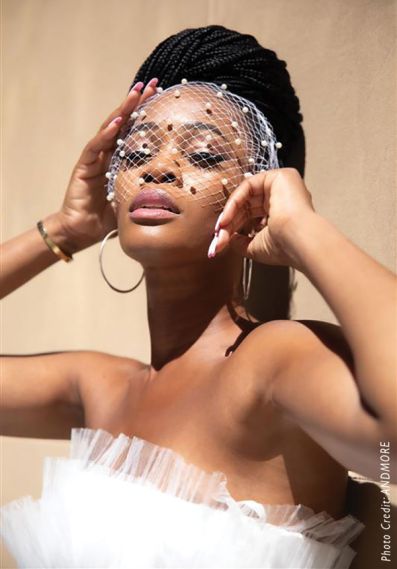
Spring 2024 Market Review - Las Vegas
Sep 1, 2023
Our gallery of the faces, fashion and fun of August/September Markets – Las Vegas

Spring 2024 Market Review - Chicago
Sep 1, 2023
Our gallery of the faces, fashion and fun of August/September Markets – Chicago
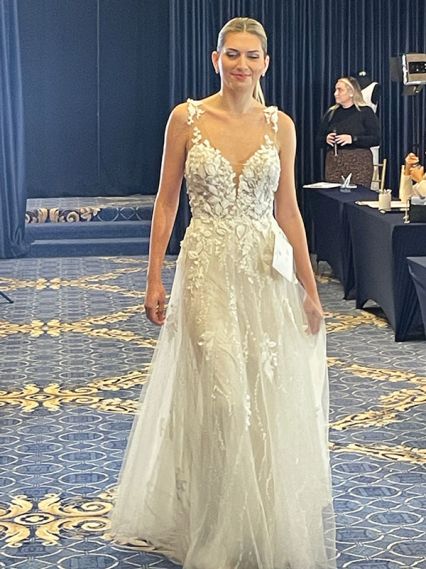
Spring 2024 Market Review - Chicago: Designers at the Drake
Sep 1, 2023
Our gallery of the faces, fashion and fun of August/September Markets – Chicago: Drake Hotel
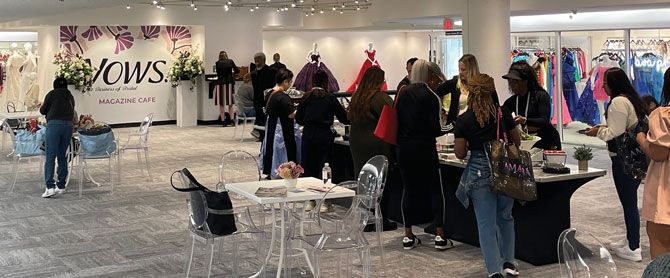
Fall 2023 Market Review - Atlanta
May 1, 2023
Our gallery of the faces, fashion and fun of March/April Markets – Atlanta
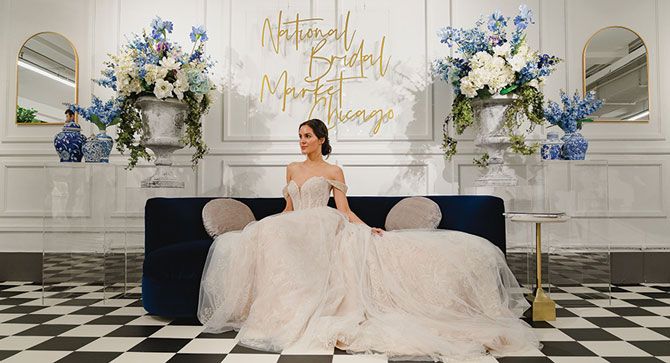
Fall 2023 Market Review - Chicago
May 1, 2023
Our gallery of the faces, fashion and fun of March/April Markets – Chicago
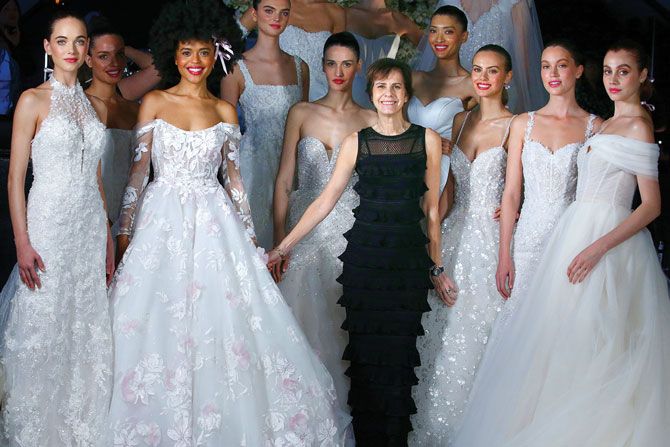
Fall 2023 Market Review - New York Bridal Market Week
May 1, 2023
Our gallery of the faces, fashion and fun of March/April Markets - New York Bridal Market Week

Fall 2023 Market Review - Chicago: Designers at the Drake
May 1, 2023
Our gallery of the friends, fashion and fun of March/April Markets! - Chicago: Designers at the Drake

Let’s Revisit Your Facebook Strategy
May 1, 2023
The so-called “dinosaur site” is still relevant but to maximize its effectiveness you must understand four realities.
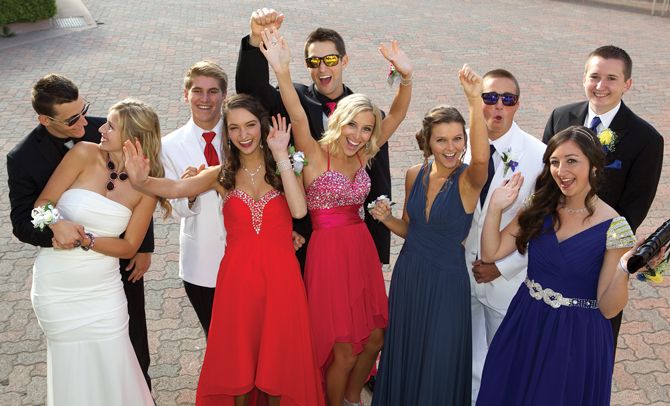
Prom 2023 Predictions
Jan 9, 2023
Optimism, excitement for the coming season… regardless of economy’s turn

Five Outdated Social Strategies
Nov 17, 2022
The times they are a-changin’ – update your marketing arsenal now!

Reigniting Your Workplace Culture
Nov 22, 2022
Guest Column by Donna Cutting, Founder and CEO, Workplace Culture & Customer Service Expert
In the face of so much uncertainty, now is the time to review, reimagine, reignite.






